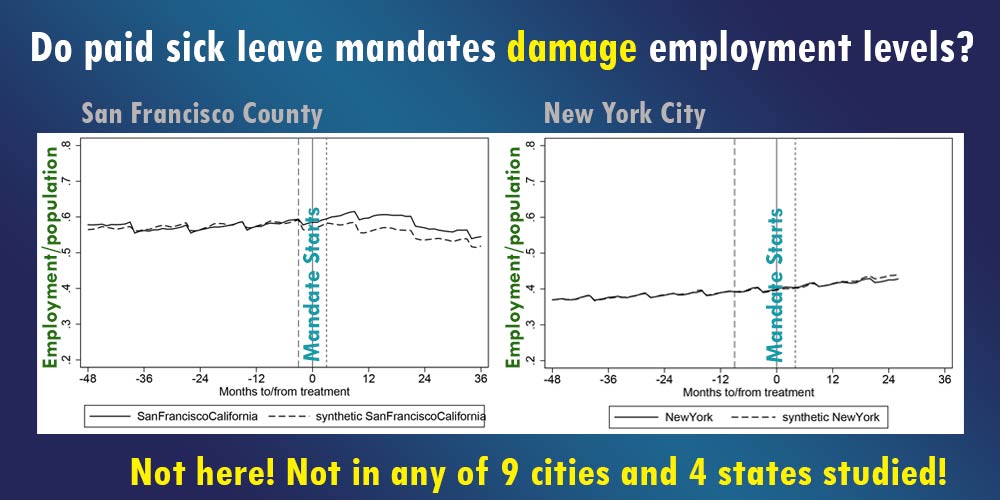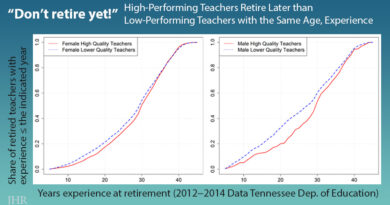No Evidence of Labor Market Disruptions Due to Sick Pay Mandates
The United States is one of very few OECD countries where employers provide sick pay only voluntarily. This has led to a situation where a third of private-sector full time-employees had no access to paid sick leave in 2011 according to the Bureau of Labor Statistics. Among low-income, part-time, and service-sector workers, more than 80 percent had no access to paid time off when they were sick. In response, over the past years, a dozen states and several dozen cities have passed sick pay mandates. A major criticism by opponents of such mandates is that they would disrupt labor markets, destroy jobs, and lead to lower wages. But if we compare labor markets in places with mandates with similar places without mandates, what are the results?
In their new work “Labor Market Effects of U.S. Sick Pay Mandates,” Stefan Pichler (ETH Zurich) and Nicolas Ziebarth (Cornell University) use administrative labor market data from the Bureau of Labor Statistics to assess the validity of this argument of mandate critics. To estimate whether sick pay mandates cause disruptions in regional labor markets, they used a novel statistical technique called the synthetic control group method and compared employment and wage developments in regions that implemented mandates with similar regions that did not implement mandates over the same time period. They looked at nine cities (including San Francisco, Washington DC, and New York City) and four states (Connecticut, California, Massachusetts, and Oregon).
As the examples in the figure show, there is not much evidence that employment dynamics systematically either improved or worsened after the introduction of a sick pay mandate. The graphs look very similar when assessing the impact on wage growth in cities and states with sick pay mandates and even when investigating specific industries, such as construction or hospitality.
In summary, Pichler and Ziebarth report that they do not find evidence of systematic and disruptive labor market effects when cities and states mandate that employees have the right to earn and take individualized sick days. Their conclusion? “Concerns of massive labor market disruptions are vastly overstated.”
Read the full study in The Journal of Human Resources: “Labor Market Effects of U.S. Sick Pay Mandates,” by Stefan Pichler and Nicolas R. Ziebarth.
***
Stefan Pichler (@StefanPEcon) is a Senior Researcher at ETH Zurich in the KOF Swiss Economic Institute, Zurich, Switzerland. Nicolas R. Ziebarth is an Associate Professor at Cornell University in the Department of Policy Analysis and Management, Ithaca, NY.
The authors are grateful for generous funding from the Robert Wood Johnson Foundation’s Policies for Action Program (#74921) and the W.E. Upjohn Institute for Employment Research’s Early Career Research Awards (ECRA) program #17-155-15.
***
Figure notes: The x-axis represents the normalized time line in months up to and since the mandates became effective (“treatment”). The y-axis shows the number of private sector jobs as a share of the total population. The solid vertical lines indicate the months when the mandates became effective, whereas the dashed vertical lines to the left indicate when the law was passed, and the dashed vertical lines to the right indicate when the “accrual period” of typically 90 days was over. The solid horizontal black lines illustrate private sector job development for the cities and states with mandates, and the dashed horizontal lines illustrate the private sector job development for the synthetic control counties or states.



